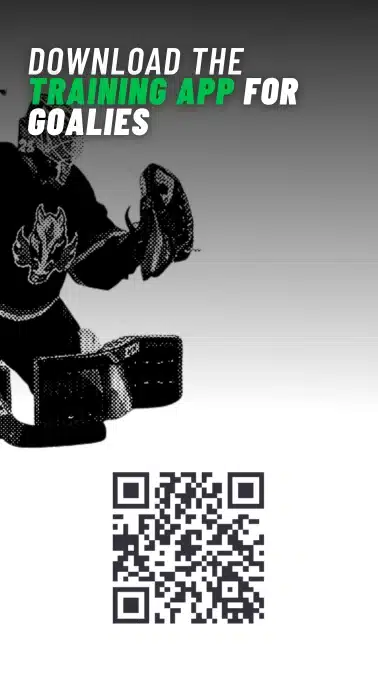The goalie glove is arguably the most important piece of equipment a goalie wears. In our glove save guide, we wrote extensively about the importance of being able to keep pucks inside the glove once they enter. Outside of better puck tracking ability, there is a real case, particularly for younger goalies, with how well the glove closes and it’s relation to trapping pucks.
If you’re struggling with certain parts of your game, namely, keeping pucks in your glove once they enter, there may be a few repairs you can make to your glove to aid in better puck catching. In this guide, we’re going to talk about things like skate lace pockets, re-lacing your glove, T and palm repair, and more.
Mending your goalie glove can help make it easier to trap pucks, make it easier to close, and overall improve your experience in the net. Not only that, it’s an excellent exercise in simply taking care of something with value, a valuable lesson that will serve you well throughout your entire life.
How to Repair A Hockey Goalie Glove
To make answering your specific question easier, this guide is broken down into specific components that all revolve around the construction of a goalies glove. In today’s day and age, often times the solution for something that is broken is simply to purchase a new one. However, as most goalies know, a particular fondness for a well broken in glove is like parting ways with a long time lover.
It’s not something that is easy, or fun to do.
Not only that, goalie equipment is expensive! With a brand new goalie glove running anywhere from $350-$600, it’s reasonable that for many people buying a new one is simply out of the question.
Despite the fact that it may seem difficult, repairing a goalie glove is actually once of the easiest pieces of goalie equipment to repair, largely due to how it’s built. The goalie glove is held together almost entirely by a thick, paracord like material that binds the glove together. As a result of this, the glove comes apart easily and provided you remember how to put it together again, making repairs is for the most part fairly simple.
Do I need any special equipment to repair a goalie glove?
While most of the repairs can be done by hand, without any special equipment, there are certain things that can make your life a lot easier. One of them is an awl. If you’re going to buy an awl, there are many repair kits for a few bucks more that will also provide things such as heavy duty thread and sewing needles.
Here is the one we own. It’s actually for leather repair, but it includes an awl, waxed thread and heavy duty sewing needles. For $4 more than an awl, it’s been well worth it.
Don’t go out and spend $30 or more on repair kits, unless you plan on starting to repair goalie equipment as a side hustle.
The main tools that will make your life easier are an awl, a heavy duty sewing needle (depending on the repair), replacement thread or cord, and material to bind the glove back together. Actual hockey lace will work just fine in a pinch.
One critical tip for doing any sort of goalie equipment repairs is to take good pictures prior to beginning the de-construction of your equipment. Remember, you’re going to have to put it back together. Taking pictures prior to taking anything apart is always a good idea, for if there is not a great video or step by step guide to any part, you’ll be able to determine how exactly it looked prior to you taking it apart.
Fixing and repairing your goalie glove, by it’s construction zone:
- Pocket repair
- T repair and reinforcing
- Palm repair
- Fixing broken lacing
- Mending material tears
- Foam replacement
Pocket Repair and Re-Lacing A Goalie Glove
In order of importance for the construction of a goalies glove, the pocket is the most important part. Without it, catching pucks is impossible. This is also the most challenging part of your glove to fix, but once you know how to do it, it’s actually quite easy.
Steps to re-lacing your goalie glove
The steps below are demonstrated in the embedded video below, which shows how to make a floating T modification in your glove. Simply re-lacing your glove is less challenging, with a few steps cut out.
- Remove the old lacing of your glove by cutting it out. Leave the binding of your glove together, unless you are replacing that as well. This is shown in the video screenshot below. The original video from VOGoalie is embedded below.
- Grab your replacement laces, 120 inch (305 cm) work best.
- Starting from the top of the glove thumb, secure your lace utilizing an anchor knot.
- Make several loops working up towards the top of the spine.
- Using the holes in the spine of the T and the binding cord that holds the palm of the glove together, build the web of your glove.
- Once you’ve reached the end, leave a tag end for joining the other side of the glove together.
- You can also secure one side of the spine to the base of the glove at this point, or opt to complete it at the end.
- Repeat this process for the other side.
- Once you’ve reached the base of the glove, using two square knots, secure the base of the T to the V area of your goalie glove palm and you’ve successfully re-laced your goalie glove.
Re-lacing your glove, while it may seem challenging at first, is quite simple. You do not need fancy equipment and most glove pocket replacements are performed with simple hockey skate lace. The exact same stuff you use on your skates.

Adding A Floating T to your Goalie Glove
A floating T is a goalie gear modification that has gained popularity in recent years and it’s beneficial because it can add depth to the pocket of your glove. Not only will it add depth, it’ll actually make the glove easier to close because the back of the T is no longer connected to the bottom of the glove pocket, or palm area.
- Cut out the old lacing.
- Tie an anchor that will be the guide for your floating T.
- Grab 120 inch (305 cm) laces to replace the pocket.
- Start by anchoring your new lacing where the top of the T meets the thumb area of your glove.
- Using this new piece of lace, wind it through the loops of the glove towards the middle. The re-lacing of your glove will be based on these loops.
- Using the holes in the spine of the T and the binding cord of the palm area of your glove, work in forward and reverse motion, holding the web of the glove together as your create your pocket on once side.
- Anchor the end of your skate lace to the bottom “V” area of the palm and repeat this process for the other side.
- Once you’ve created both sides of your pocket, ensure that you’ve connected them underneath the now “floating” T.
- Optional: Cut off the bottom portion of the spine of your glove, making the floating T smaller. If you do this step, you will need an awl or something to create two holes that you can run laces through again.
- If you have decided you do not want a floating T, you’ll simply connect the spine of the T area to it’s original fixed position at the base of the pocket.
- Make two anchor knots to secure your new floating T and pocket of the glove, and you’re done!
Here’s a great video on how to add a floating T to your goalie glove.
Repairing A Broken T On A Goalie Glove
One common issue with newer goalie gloves is that the forward facing side of the T ends up bent or broken. This results in an improper closure of the goalie glove, making it harder to trap pucks.
While this is a more advanced repair, it’s still entirely possible to DIY the entire thing yourself.
Steps to repairing a broken T.
- Cut out the old lacing so you can easily access the T area.
- You may have to cut open the T, sewing it back together by hand.
- If you can access the T and spine without cutting it open, it’s better to replace this without doing so.
- Open the T, add your replacement plastic, and re-seal the T. You may have to use thread for this step.
- Once you’ve re-closed the T of the glove, you should follow the steps to re-lacing your goalie glove listed above.
Repairing The Palm On A Goalie Glove
Of all the DIY projects in repairing a goalie glove, making repairs to the palm area of the glove is by far the most involved and if you’re on the fence about it, it’s one that I would confidently suggest hiring somebody to do it. Whenever you make repairs to the palm of a goalie glove, you run the risk of improper closure after putting it back together.
You’ll want to make sure that you have really high quality glue, high density foam that’s still thin enough to properly close, and stitching material should it be needed. While certain gloves have no stitching on the internals of the palm area, other brands like Brian’s feature some stitching to the palm area of their gloves, making repairing them a bit more challenging.
To repair the internals of the palm of your glove, you’re going to need to remove the binding along the entire V portion of the glove palm. When gloves are manufactured, this is the last step in putting them together for sale.
This is also how you access the palm area and in most cases, removing this lacing will open up the entire glove itself.
One you’ve opened up the palm area of the glove, you’ll see various levels of foam and plastic. Typically, the plastic inside the palm has begun to crack, is cracked, or has started to bend in a direction that’s undesirable. If this is the case, you’re going to need plastic to replace this.
Make sure that you’ve cut your replacement plastic to the correct size and glued or secured it back in place properly. Once you’ve done so, you can go ahead and re-bind the glove back together properly.
Common Palm Repairs on Goalie Gloves
- Curved palm near the pinky area
- Cracked plastic inside the palm
- Improper closure of the glove due to cracking plastic
- Torn Jen-pro material in the palm area
- Torn internals inside the palm area
- Ripped thread in the hand pocket area of the glove
All of the above issues with goalie gloves are fixed by taking the binding from the glove apart, addressing, and replacing broken material inside. For the majority of palm fixes inside goalie gloves, you will not have to sew anything back together apart from re-binding your glove.
I Don’t Want To Do It Myself
Read all this and decide that repairing your goalie glove yourself isn’t something you want to do? One company I’d recommend is The Goalie Glove Guy. They will re-lace your glove, make repairs needed, and even send you a loaner glove while yours is being worked on.
They’re capable of making just about any type of repair on goalie equipment, no matter what you have going on.
I’ve linked a few of his goalie glove repairs below.







